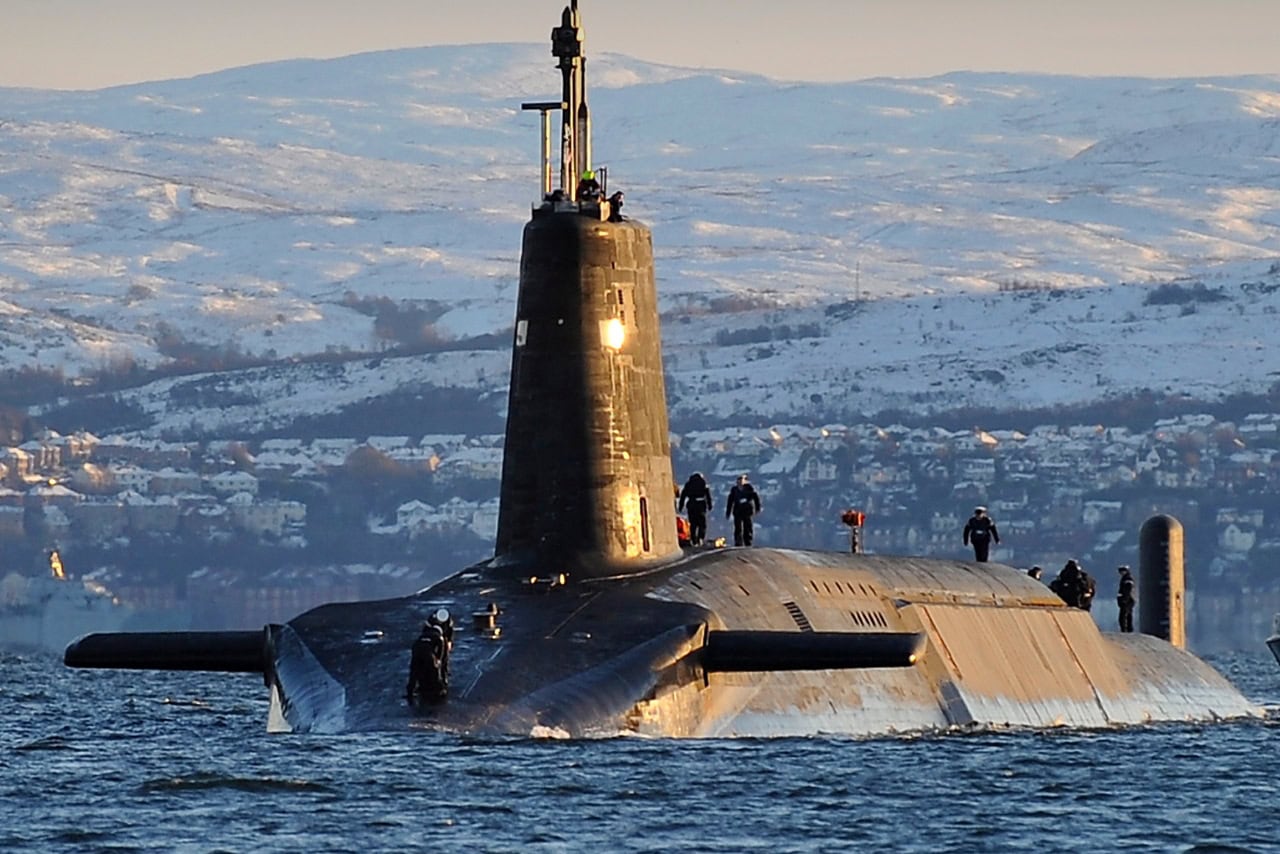Article Summary: The Vanguard-class submarines, in service with the UK’s Royal Navy since the early 1990s, provide Britain’s primary nuclear deterrent.
-These nuclear-powered ballistic missile submarines (SSBNs) carry Trident II D5 missiles, ensuring continuous at-sea deterrence.
-Built by Vickers (now BAE Systems), these stealthy submarines feature advanced sensors and armaments, including torpedoes.
Those 4 Words: It Could Start WWIII
Inside the Vanguard-Class: Britain’s Powerful Nuclear Submarines
The Vanguard-class submarines are a cornerstone of the United Kingdom’s strategic nuclear deterrent.
These nuclear-powered ballistic missile submarines (SSBNs) have been in service with the Royal Navy since the early 1990s and continue to play a critical role in national defense.
This article delves into the history, design, capabilities, and future of the Vanguard-class SSBNs.
The UK’s Main Nuclear Platform
The Vanguard-class submarines were developed in the 1960s as part of the UK’s Trident nuclear program, which aimed to replace the aging Resolution-class submarines and their Polaris missiles. In the late 1960s, the UK operated four Resolution-class submarines, each armed with sixteen US-built UGM-27 Polaris missiles.
This system, known as the UK Polaris program, was based on the 1963 Polaris Sales Agreement with the United States. By the early 1980s, it became clear that both the Resolution-class submarines and their Polaris missiles would need replacement within a decade. The decision to develop a new class of SSBNs was made in the early 1980s, with the first submarine, HMS Vanguard, being laid down in 1986 and entering service in 1993.
The British government began exploring options for a new generation of SSBNs. After extensive studies and consultations, the decision was made to proceed with the Trident program, which would involve the construction of new submarines and the acquisition of the US-designed Trident II D5 missiles.
The class comprises four submarines: HMS Vanguard, HMS Victorious, HMS Vigilant, and HMS Vengeance. These submarines were built by Vickers Shipbuilding and Engineering Ltd (now BAE Systems) at Barrow-in-Furness. The total cost for the four submarines was approximately £12.15 billion.
The Vanguard-class submarines are the largest submarines ever built for the Royal Navy, with a length of 149.9 meters (491 feet 10 inches) and a beam of 12.8 meters (42 feet). They have a submerged displacement of 15,900 tons (17,500 short tons). The submarines are powered by a Rolls-Royce PWR2 nuclear reactor, which provides virtually unlimited underwater endurance, limited only by the need for food and maintenance.
The propulsion system includes two GEC turbines, generating 27,500 shp (20.5 MW), allowing the submarines to achieve speeds over 25 knots (29 mph) while submerged. The armament consists of 16 ballistic missile tubes for Lockheed Trident II D5 SLBMs and four 21-inch (533 mm) torpedo tubes for Spearfish heavyweight torpedoes.
The sensor suite includes the Thales Underwater Systems Type 2054 composite sonar suite, Kelvin Hughes Type 1007 I-band navigation radar, and Pilkington Optronics CK51 search periscope and CH91 attack periscope.
Brittain’s Big Stick
The primary role of the Vanguard-class submarines is to serve as a sea-based nuclear deterrent. Each submarine can carry up to 16 Trident II D5 missiles, which are equipped with multiple independently targetable re-entry vehicles (MIRVs).
As the Vanguard-class submarines are the only nuclear capable platforms for the UK, they play an especially vital role in the nation’s defense. These missiles provide the UK with a credible and effective nuclear deterrent, capable of striking targets at long ranges.
The Vanguard-class submarines are designed for stealth and endurance. They can remain submerged for extended periods, making them difficult to detect and track. This capability ensures that at least one submarine is always on patrol, providing a continuous at-sea deterrent.
Since their introduction, the Vanguard-class submarines have been a critical component of the UK’s nuclear deterrent strategy. They have conducted numerous patrols, ensuring that the UK maintains a credible and effective nuclear deterrent.
The submarines are based at HM Naval Base Clyde (HMS Neptune) in Scotland, where they undergo maintenance and refitting.
The Vanguard-class submarines have faced challenges over the years, including maintenance issues and the aging of the fleet. However, they have continued to operate effectively, providing the UK with a reliable nuclear deterrent.
The Dreadnought-Class and the Future of the Vanguard SSBNs
The Vanguard-class submarines are scheduled to be replaced by the new Dreadnought-class submarines starting in the early 2030s. The Dreadnought-class will continue the role of providing the UK’s sea-based nuclear deterrent, incorporating advanced technologies and improved capabilities.
The development of the Dreadnought-class submarines is part of the UK’s commitment to maintaining a credible and effective nuclear deterrent. The new submarines will ensure that the UK continues to have a robust and reliable nuclear deterrent well into the future.
The Vanguard-class SSBNs have been a vital part of the UK’s national defense strategy for over three decades. Their design, capabilities, and operational history highlight their importance as a sea-based nuclear deterrent.
As the UK prepares to transition to the Dreadnought-class submarines, the legacy of the Vanguard-class will continue to be felt in the realm of strategic defense.
These submarines, despite now becoming obsolete, have served a long and faithful role in the British Royal Navy. Their ability to provide a continuous at-sea deterrent ensures that the UK remains a formidable nuclear power on the global stage.
About the Author: Isaac Seitz
Isaac Seitz, a 19FortyFive Defense Columnist, graduated from Patrick Henry College’s Strategic Intelligence and National Security program. He has also studied Russian at Middlebury Language Schools and has worked as an intelligence Analyst in the private sector.

